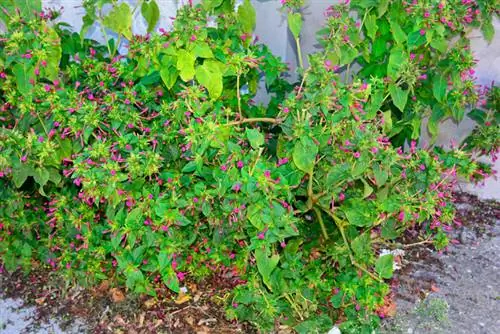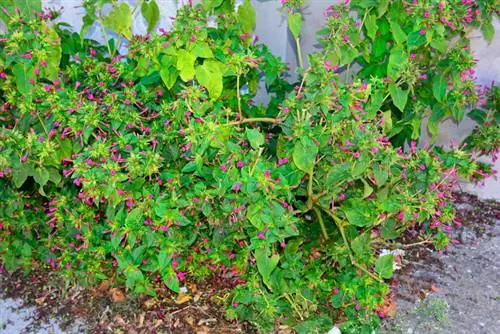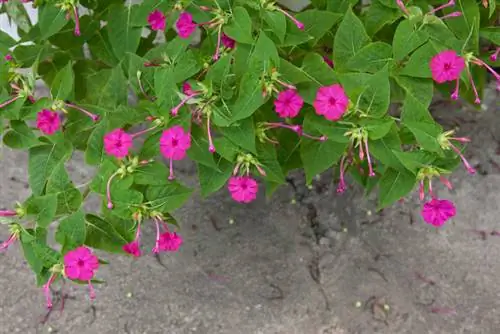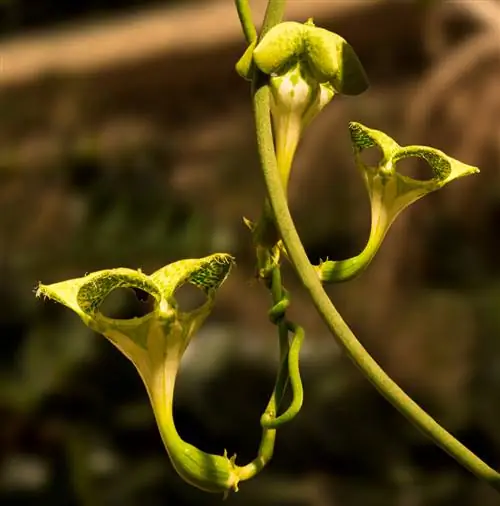- Author admin [email protected].
- Public 2023-12-16 16:46.
- Last modified 2025-01-23 11:20.
Its name suggests that the Japanese miracle flower comes from Asian regions and has a certain degree of frost hardiness. In fact, the fragrant and flowering plant came to Europe from sunny South America. You can find out how to overwinter a Mirabilis jalapa successfully here.

Is the Japanese miracle flower hardy?
The Japanese miracle flower is not hardy and should be stored before the first frost. Overwinter the tubers in a dark room at 5-10°C, for example on a wire rack or in dry sand. Plant them again in May.
The Japanese miracle flower goes limp when it freezes
As the days get shorter, the Japanese miracle flower ends its appearance on the garden stage this year. As temperatures fall, it becomes too uncomfortable for her in the Central European climate. Therefore, it pulls in its shoots and leaves to create a reserve from the remaining nutrients in the tuber. If the thermometer fluctuates between 5 and 10 degrees Celsius at night, the exotic plant cannot survive in the open air in the long term.
How to guide the Japanese miracle flower through the winter
Yellow-colored leaves and steadily decreasing abundance of flowers signal in autumn that the Japanese miracle flower is preparing to rest. Therefore, stop giving fertilizer from September onwards. At the same time, gradually reduce watering. Put the Mirabilis jalapa away in good time before the first frost so that they can overwinter:
- Lift the tubers out of the ground using a digging fork (€139.00 on Amazon)
- Cut off the drawn shoots and all roots
- Take off adhering soil
Choose a dark room with temperatures between 5 and 10 degrees Celsius as your winter quarters. Ideally, store the tubers on a wooden shelf or wire rack without the peels touching each other. Alternatively, store the tubers in a box with dry sand, peat, straw or sawdust. Only after the Ice Saints do you plant the root tubers in their original place.
Don’t let the tubers dry out
If the tubers of a Japanese miracle flower overwinter in a room with high humidity, winter care is limited to repeated turning. However, if the air in the winter quarters is dry, spray the root tubers with a fine mist of soft water every 2 to 3 weeks so that they do not dry out completely.
Tip
If there is a lack of suitable space for winter quarters, harvest the pea-sized seeds of your Japanese miracle flower. Sowing is very easy on the bright, warm windowsill, so that you can plant vital young plants in the garden in May.






